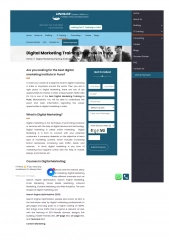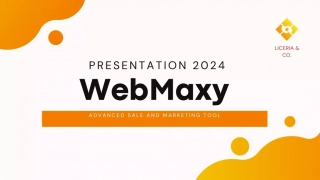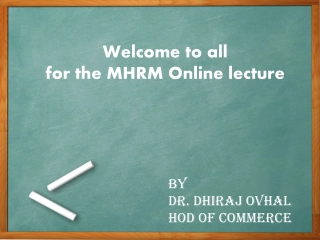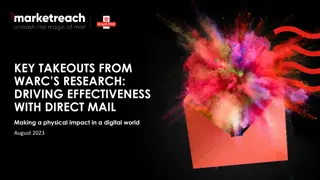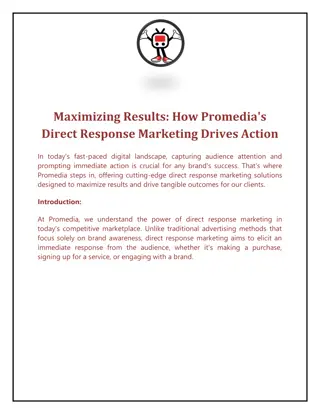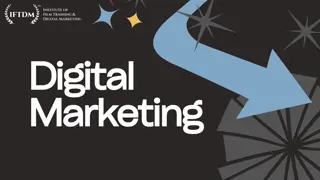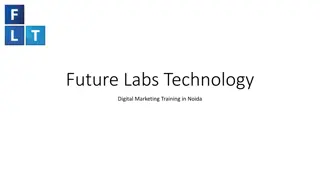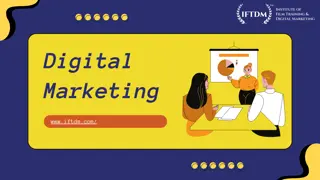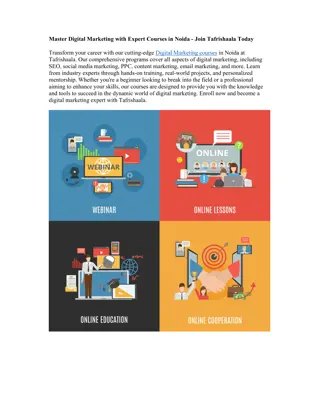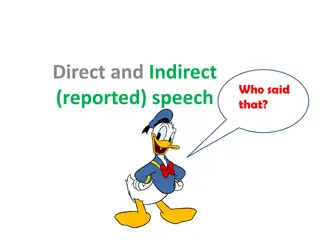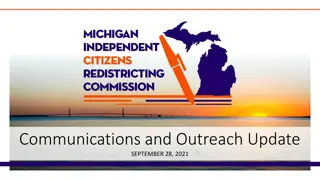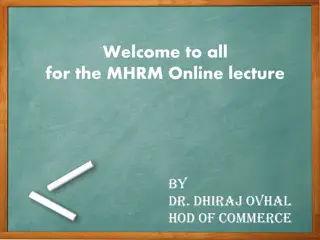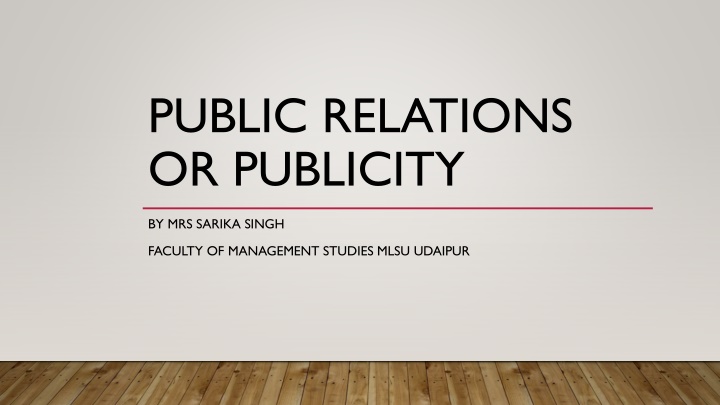
Effective Tools of Public Relations and Publicity
Public relations, led by professionals like Mrs. Sarika Singh, plays a crucial role in building positive relationships with the public. This article discusses major tools such as publications, events, news, speeches, and public service activities utilized to enhance brand image and communication strategies. Learn how companies leverage these tools to reach target markets effectively.
Download Presentation

Please find below an Image/Link to download the presentation.
The content on the website is provided AS IS for your information and personal use only. It may not be sold, licensed, or shared on other websites without obtaining consent from the author. If you encounter any issues during the download, it is possible that the publisher has removed the file from their server.
You are allowed to download the files provided on this website for personal or commercial use, subject to the condition that they are used lawfully. All files are the property of their respective owners.
The content on the website is provided AS IS for your information and personal use only. It may not be sold, licensed, or shared on other websites without obtaining consent from the author.
E N D
Presentation Transcript
PUBLIC RELATIONS OR PUBLICITY BY MRS SARIKA SINGH FACULTY OF MANAGEMENT STUDIES MLSU UDAIPUR
PUBLIC RELATIONS Public relations is a strategic communication process companies, individuals, and organizations use to build mutually beneficial relationships with the public. A public relations specialist drafts a specialized communication plan and uses media and other direct and indirect mediums to create and maintain a positive brand image and a strong relationship with the target audience.
MAJOR TOOLS OF PUBLIC RELATIONS AND PUBLICITY (a) PUBLICATIONS: Companies rely extensively on communication materials to reach and influence target markets. These include annual reports, brochures, articles, audio-visual materials, and company newsletter and magazines. Company newsletters, and magazines can help build up the company s image and convey important news to target markets. Audio-visual material, such as films, slides, and video and audio cassettes are coming into increasing use as promotion tools. The cost of audio-visual material is usually greater than the cost of printed material, but so is the impact.
b) EVENTS: Companies can draw attention to new products or other company activities by arranging special events. These include news conferences, seminars, outings, exhibits, contests and competitions, anniversaries, and Sport and culture sponsorships that will reach the target publics.
c) NEWS: One of the major tasks of PR professionals is to find or create favourable news about the company, its products, and its people. News generation require skills in developing a story concept, researching it, and writing a press release. (d) SPEECHES: Speeches are another tool for creating product and company publicity. Increasingly, company executive must face questions from the media or give speeches at trade associations or sales meetings. These appearances can build the company s image.
(e) PUBLIC SERVICE ACTIVITIES: Companies can improve public goodwill by contributing money and time to good causes. A large company may typically ask executives to support community affairs where their offices are situated. In other instances, companies may donate a certain amount of money to specified cause out of consumer purchases.
(f) IDENTITY MEDIA: Normally, a companys materials acquire separate looks, which creates confusions and misses an opportunity to- create and reinforce a corporate identity. In an over-communicated society, companies have to compete for attention. They should strive to create a visual identity that the public immediately recognizes. The visual identity is carried by the companies logos, stationary, brochures, signs, business forms, business cards, buildings, uniforms and dress codes, and rolling stock.
OBJECTIVE OF PUBLIC RELATIONS a) Build awareness: PR can place stories in the media to bring attention to a product, service, person, organization or idea. (b) Build credibility: PR can add credibility by communicating the message in an editorial context. (c) Stimulate the sales-force and dealers: PR can help boost sales- force and dealer enthusiasm. Stories about a new product before it is launched will help the sales farce sell it to retailers and consumers. (d) Hold down promotion costs: PR costs less than direct mail and media advertising. The smaller the company s promotion budget, the stronger is the case for using PR to gain share of mind.
FUNCTIONS OF PUBLIC RELATIONS Public relations is different from advertising. Public relations agencies don t buy ads, they don t write stories for reporters, and they don t focus on attractive paid promotions. They rather promote the brand by using editorial content appearing on magazines, newspapers, news channels, websites, blogs, and TV programs. Using earned or free media for promotion has its own benefits as information on these mediums aren t bought. It has a third party validation and hence isn t viewed with scepticism by the public.
FUNCTIONS OF PUBLIC RELATIONS MANAGER AND AGENCIES Anticipating, analysing, and interpreting the public opinion and attitudes of the public towards the brand and drafting strategies which use free or earned media to influence them. Drafting strategies to support brand s every campaign and new move through editorial content. Writing and distributing press releases. Speechwriting. Planning and executing special public outreach and media relations events. Writing content for the web (internal and external websites).
Developing a crisis public relations strategy. Handling the social media presence of the brand and responding to public reviews on social media websites. Counselling the employees of the organization with regard to policies, course of action, organization s responsibility and their responsibility. Dealing with government and legislative agencies on behalf of the organization. Dealing with public groups and other organizations with regard to social and other policies of the organization and legislation of the government.
IMPORTANCE OF PUBLIC RELATIONS Builds Up The Brand Image The brand image gets a boost when the target customers get to know about it through a third party media outlet. A good public relations strategy help the brand builds up its image in a way it wants to. It s Opportunistic Public relations strategies make the brand capitalize on the opportunities. Google was in the news for donating to Ebola.. Coca-Cola did a PR stunt against obesity. These opportunities even attract many influencers to share the brand story to their followers.
Promote Brand Values PR is used to send out positive messages which are in line with the brand s value and its image. This builds up the brand s reputation. Strengthen Community Relations PR strategies are used to convey that the brand is as much part of the society as the target audience. This builds up a strong relationship of the brand with the public.
ADVANTAGES OF PUBLIC RELATIONS Credibility: Public trusts the message coming from a trusted third party more than the advertised content. Reach:A good public relations strategy can attract many news outlets, exposing the content to a large audience. Cost effectiveness: Public relations is a cost effective technique to reach large audience as compared to paid promotion.
DISADVANTAGES OF PUBLIC RELATIONS No Direct Control:Unlike paid media, there isn t a direct control over the content distributed through the earned media. This is the biggest risk of investing in public relations. Hard To Measure Success: It is really hard to measure and evaluate the effectiveness of a PR campaign. No Guaranteed Results:Publishing of a press release isn t guaranteed as the brand doesn t pay for it. The media outlet publishes it only if it feels that it ll attract its target audience.
DIRECT MARKETING Direct marketing is defined as communicating directly with the targeted customers on an individual basis so that immediate response can be obtained. Interaction must take place in Direct Marketing and therefore it is called two-way of communication.
TYPES OF DIRECT MARKETING Face to Face Selling Telemarketing Direct Mail Marketing Catalog Marketing Direct Response Television Marketing Kiosk Marketing Online Marketing & Electronic Commerce
Face to Face Selling It is the oldest form of direct marketing or simply marketing in which the authorized sales persons are employed by the organizations who meet the prospects directly. These sales persons make efforts to reach the prospects, convert them into profitable customers, develop long run relationships and hence promote the business of their organizations.
Telemarketing Telemarketing is that form of direct marketing in which telephone is used for the purpose of communicating with the customers buys the products directly from the sellers. Telemarketing is further divided into the following two types. Outbound Telephone Marketing Inbound Toll Free
Outbound Telephone Marketing Outbound telephone marketing is used to sell the products directly to the customers by calling them on the telephone. Inbound Toll Free In this type, orders are received from customers on the telephone as a result of ads on television or radio etc. There are many customers who admire the unsolicited telemarketing, but most of them feels disturbance by receiving such unsolicited sales messages on the telephone. Therefore, certain legislation is being made for the protection of people from this unsolicited telemarketing during specific hours of the day.
Direct Mail Marketing These forms of direct marketing include direct mail marketing in which an offer, reminder, announcement or other things are sent to the address of a particular person. Direct one to one Communication takes place in direct mail marketing. There are several advantages of using direct mail marketing which are as follow. It is much more flexible. It is personalized. Selection of target market is high. The results are easily measured.
The cost of direct mail marketing is relatively higher than other forms of direct marketing, but in this case the prospects are quickly converted into the potential customers. Direct mail marketing is further divided into the following three types. Fax Mail E-mail Voice mail
Catalog Marketing In catalog marketing, catalogs are mailed to a specified list of customers or provide physical catalogs to a group of people at stores in order to sell particular products. A catalog is a combination of at least eight printed pages which includes details of multiple products along with the identification of direct ordering mechanism. A complete line of goods is offered through catalogs by some stores. There are many direct retailers who place the catalogs of their product on the internet. The internet based catalogs are passive in nature and therefore need to be marketed electronically.
Direct Response Television Marketing There are two forms of direct response television marketing which are as follow. Direct Response Advertising Home Shopping Channels
Direct Response Advertising When infomercials or television spots are aired by the marketers, direct response advertising takes place. Home Shopping ChannelsThese consist of complete channels or programs that are specified in selling goods or services. In the coming years linkages with the internet technology along with the two sided interactive television would transform the television shopping much sophisticated from the current type and it would be regarded as one of the most effective forms of direct marketing.
Kiosk Marketing There are certain organizations that have sophisticated machines called kiosks, which provide information about the particular products and have an effective ordering mechanism. These kiosk machines are placed in the main area of the cities like airport, stores and other famous locations. Some business marketers also place their kiosk machines at the trade shows for the promotion of their products.
Online Marketing & Electronic Commerce One of the effective forms of direct marketing is the online marketing & the electronic commerce, which is carried out completely in an electronics way. There are online computer systems that connect the customers with the seller in an online manner so that that can make transactions. Online marketing & electronic commerce is further divided into the following two forms. Commercial Online Services Internet
Commercial Online Stores The information and marketing services are offered by the authorized commercial online service provider who charges a monthly fee for its subscribers. Internet With the advancement in the information technology field, now the old commercial online service is replaced by highly most advanced internet which serves as a basic online marketing channel. The internet is composed of a large number of different networks of computers that are connected with each other. For a meeting of sellers and buyers over the internet, World Wide Web serves as the popular place of meeting.



